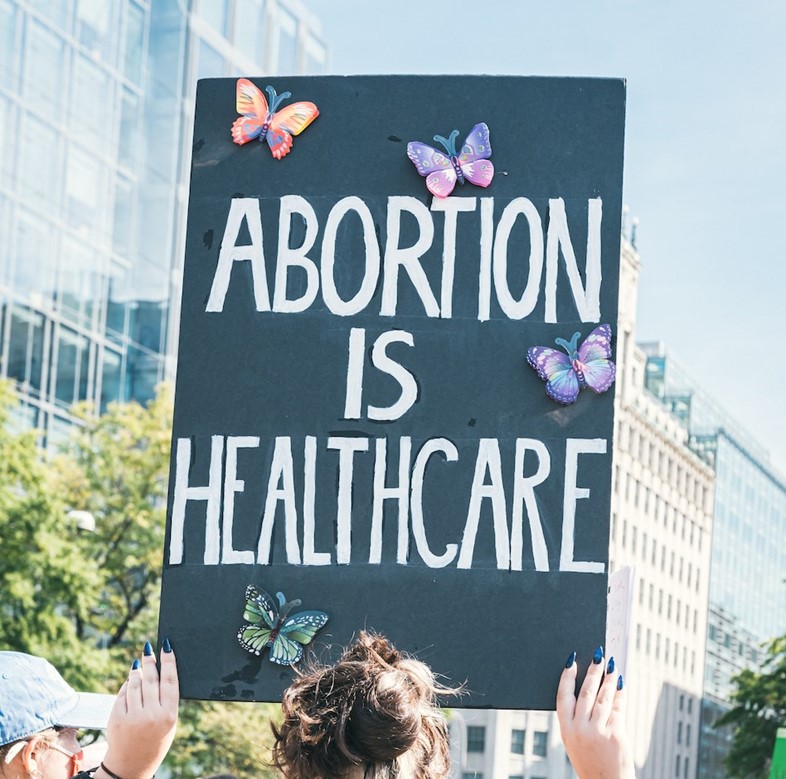Last Friday, the President signed an executive order to protect access to abortion care following the fall of Roe v Wade – here’s what that means for American women
On Friday, Joe Biden signed an executive order in an effort to protect American women following the overturn of Roe v Wade last month. Speaking from the White House, President Biden branded the Supreme Court’s decision as “terrible” and “an exercise in raw political power”.
Abortion bans have now taken effect in 13 states, with 12 additional states likely to follow suit in the coming weeks. As the landscape is rapidly changing, confusion has resulted in numerous clinics refusing to provide abortion care even when total bans have not yet become law.
Now, it seems as though Biden is hoping to provide further guidance and protect women’s rights with a new executive order. But will the order have a real impact, or is it too little too late?
FIRSTLY, WHAT IS AN EXECUTIVE ORDER?
An executive order is a signed, written, and published directive from the president of the United States that manages operations of the federal government.
Speaking to Dazed, legal historian Professor Mary Ziegler explains further. “An executive order is an order directing executive branch officials or agencies to do – or not do – something. They are enforceable as long as the president has the constitutional authority to issue the order.”
WHAT EXACTLY IS IN BIDEN’S EXECUTIVE ORDER?
Biden’s recent executive order has directed the Department of Health and Human Services (HHS) to “take additional action to protect and expand access to abortion care, including access to medication” within the next 30 days. As part of this, the HHS has been tasked with safeguarding access to services like abortion and contraception, including access to abortion pills (mifepristone and misoprostol) and protecting the right to travel out of state to seek an abortion.
The order also sets out a plan to assemble a group of private pro bono lawyers to “encourage robust legal representation of patients, providers, and third parties lawfully seeking or offering reproductive health care services throughout the country”, as well as make progress toward protecting “the safety and security of patients, providers and clinics”. A guide will explain steps to ensure people are protecting their personal data on platforms such as period-tracking apps, amid fears that authorities could try to prosecute them using their data as evidence.
“There’s an increasing concern that extremist governors and others will try to get that data off of your phone which is out there in the ether, to find what you’re seeking, where you’re going and what you’re doing with regard to your healthcare. Talk about no privacy,” Biden said. “This executive order asks the FTC [Federal Trade Commission] to crackdown on data brokers that sell private information to extreme groups.”
“It’s a signal that the administration may do more on abortion down the road,” Ziegler says.
WHAT’S MISSING FROM IT?
Biden’s signing of this executive order is welcome news, but it’s far from watertight. Although the order calls for expanded access to abortion medication in states where abortion has not been made illegal, it is vague about how this will be achieved. For example, it doesn’t say whether “expanding access” will include making abortion pills available over the counter, and while it asks the HHS to draw up “updates to current guidelines” for emergency medical care to reduce deaths in pregnant women who require abortions in medical crises, it does not call for HHS to solidify these ‘guidelines’ into law.
Plus, while the Department of Justice has been tasked with convening a group of pro bono lawyers to represent patients and practitioners, the order neglects to mention whether the administration will work to support the attorneys doing this already – like those at the legal non-profit If/When/How.
The biggest issue with the order seems to be the lack of clarity. “The order looks mostly like a placeholder,” Ziegler says. “It says relatively little about what the administration will do to guarantee access to medication abortion. It doesn't direct officials to create a new rule on emergency medical services. It calls for expanded protections for birth control and digital privacy but does not spell out what will be done to make that happen.”
COULD BIDEN DO MORE?
It’s clear that as president, Biden needs to be doing a lot more if he’s serious about protecting women’s rights.
“First, the administration can offer concrete proposals on how it will expand access to birth control, abortion medication, digital privacy, or adequate life-saving care for pregnant patients. Asking federal agencies to solve this problem is fine, but only if that leads to real action in the future,” Ziegler says.
“Legal experts have offered a number of other possible steps, including declaring a public health emergency. Advocates argue that with this step, the federal government could make medication abortion available in states that criminalize abortion or even shield doctors from performing abortions in those states. The Biden Administration has expressed concern that the federal courts would decide that he lacked the authority to declare an emergency – and that there are not enough funds dedicated to such emergencies to make much of an impact,” she continues.
“Others have proposed using federal land for abortion clinics in states that ban abortion, or taking the position that federal drug laws on medication abortion preempt state rules banning it. While the former seems off the table for Biden, we have reason to think the administration may take further steps on medication abortion.”
Things are looking up: on Sunday, Biden told reporters that he is looking into moving forward with declaring a public health emergency. Whether or not the declaration happens, one thing is certain: the fight is far from over.
